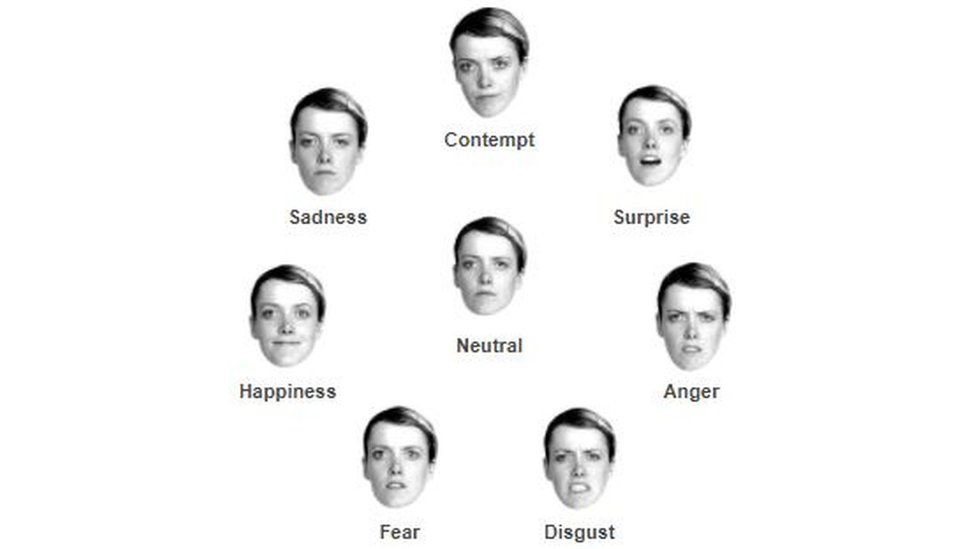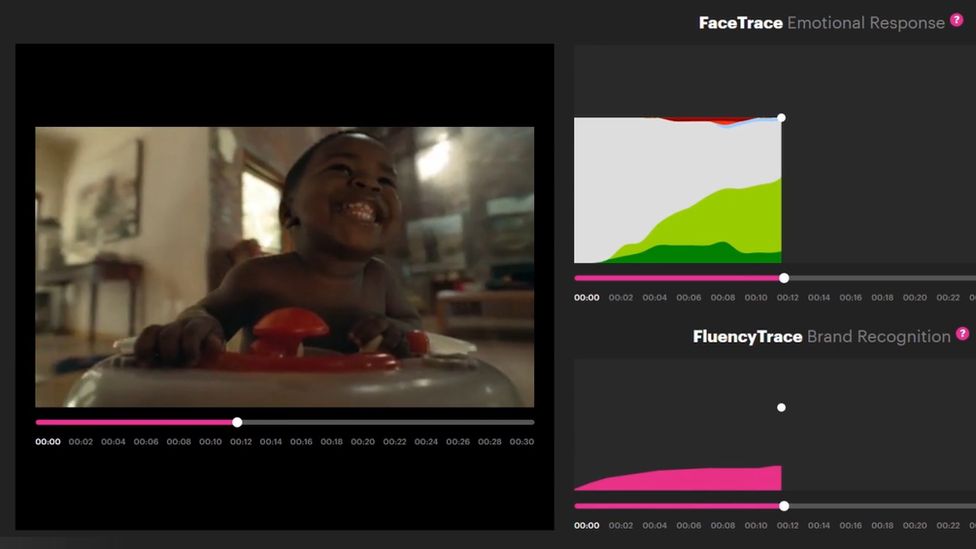The sophisticated tech predicting if an advert will work
 Image source, Kerry Collinge
Image source, Kerry CollingeBack in 2007, Kerry Collinge, who works in marketing, found herself working on an unusual project featuring a drumming gorilla.
The TV advert was for Cadbury's Dairy Milk chocolate, and the gorilla - or rather, an actor wearing an extremely convincing gorilla suit - plays the drum solo from the Phil Collins song In the Air Tonight.
It was an immediate hit with viewers: sales of the chocolate soared, and the ad went on to be voted the UK's favourite.
At the time the advert was made, Ms Collinge was a senior figure in Cadbury's in-house marketing team. But as she explains, the finished piece might never have seen the light of day.
"The ad lay finished in the company, within Cadbury's, for nine months before anybody would let it out," she says.
 Image source, Shutterstock
Image source, ShutterstockInitial market research had suggested that the ad would not do well with customers. After all, a drumming gorilla has nothing to do with chocolate.
Yet, Ms Collinge and colleagues were convinced it would be a hit. So she went to a London-based high-tech, ad-testing company called System1 for a second opinion. Its online-based system doesn't ask participants whether they like a particular advertisement.
Instead, it asks at least 150 people to view the ad and record their emotional responses to it - the drumming gorilla got an extremely positive score. Ms Collinge reported this back to Cadbury's bosses, and the ad was released to widespread acclaim.
"I used the testing to really give confidence to Cadbury that the ad was going to do a fantastic job," she says. "Because it was very, very different for them."
It takes a foolhardy person to claim they are not influenced by advertising. In today's digital world it is coming at you all the time, and the amount of money companies spend on advertising their products and services has never been higher.
This year global ad-spend will reach $706bn (£527bn), according to one study. That is up from $634bn in 2019, and digital advertising - adverts you see or hear on your computer and mobile phone - now accounts for 62% of the total.
The problem for brands however, remains neatly summarised by this quote from US car industry pioneer, Henry Ford: "Half the money I spend on advertising is wasted, the problem is I do not know which half."
To try to ensure adverts are as successful as possible, retailers are using high-tech ad-testing firms more often.
UK firm, Kantar, is another firm working on these analytics. It's online testing system also focuses on a person's emotional response to being shown an advert. One way it does this is by connecting to a tester's laptop, or webcam, then using facial-mapping software to monitor their reactions.
 Image source, Getty Images
Image source, Getty ImagesJane Ostler, Kantar's executive managing director of creative and media products, says this type of more sophisticated testing is increasingly in demand.
This shift is because companies want to advertise their products across a large number of platforms - print, TV and social media. These various mediums may require a different advert for the same product.
"I think for clients, that is the real challenge - not only making it [the adverts] all, and making it all integrated and part of the same campaign, but also how to measure it and whether it is working," she says.
Ms Collinge now works for System1 as its director of marketing and partnerships. The system asks testers to reveal their emotional response to an advert, as it is playing, by clicking on the relevant small graphic of a human head on their screen.
Each of these pictures show a different emotion, with that emotion also written underneath. The choices are contempt, surprise, anger, disgust, fear, happiness, sad, and neutral.
 Image source, System1
Image source, System1"We don't want to ask people what they're going to do [whether they will buy the product or not], because we know that's not very predictive of how an advert is going to perform, because people go into their left brain and start thinking too much," says Ms Collinge.
"Instead, we want to measure what their natural feeling is, what their natural emotion is, what all those basic emotions are. We can get a snapshot of which parts of an ad are working or not."
The ultimate aim is that clients get both accurate short and long-term sales predictions, and additional metrics like finding out whether the brand of the company is recognisable and familiar to customers or not.


New Tech Economy is a series exploring how technological innovation is set to shape the new emerging economic landscape.

Priyanka Carr, who is the chief operating office of US software firm Momentive says that the benefit of using online ad-testing is that it is cheaper than in-person testing or market surveys. (Momentive is also the owner of another provider of online ad-testing - SurveyMonkey).
"It doesn't take hundreds of thousands of dollars to run an ad-test [as it could do previously]," says Ms Carr. "It now takes tens of thousands of dollars to run a large ad-test, and you can do it early in the process. That's one major differentiator."
One such online tester is Nicole Cheong, from Johannesburg. She recently reviewed an alcohol advertisement that included wheelchair users but felt the survey questions were somewhat leading, probing her reaction to people with disabilities in adverts.
"It was a cute story and touching, but it didn't resonate with the product for me," she adds.
System1 says that its prices start from around £2,000 per advert, while fellow online ad-tester, Toluna, says that its prices can be as low as 5% of an advert's campaign budget.
 Image source, System1
Image source, System1But if brands can now test their adverts in more depth than ever before, what makes a good one in the first place? How can a retailer and its advertising agency, dream up the next 'drumming gorilla'?
Psychologist, Stuart Duff, of UK business coaching firm Pearn Kandola, says that if brands want to reach customers hope is the emotion they should focus on.
"Emotions are critical to our memory," he explains. "We do not remember factual or bland information easily, but something that is moving or uncomfortable will be committed to memory with ease. What are the three most powerful emotions? I would suggest that fear, guilt and hope.
"Hope is associated with feelings of joy and relief, and offers a way out from fear and guilt. It is hope that will move us forward and trigger feelings of trust in the product."



No comments